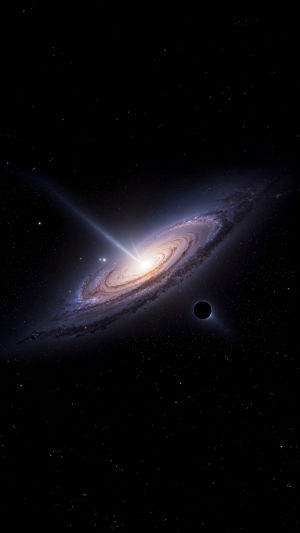Black holes are often seen as mysterious cosmic monsters, but their real story is far stranger—and more fascinating—than any myth.
Today, we’re going to uncover what black holes really are, showing a scientific picture that goes beyond the usual imagination.
<h3>Understanding Black Holes</h3>
So, what exactly is a black hole? Simply put, it’s an extreme object in space where gravity is so strong that even light cannot escape. Black holes usually form when a massive star runs out of nuclear fuel. Without enough internal pressure to resist gravity, the star collapses into an incredibly dense point called a singularity.
<h3>The “Pulling” Myth</h3>
Many people think black holes pull in everything around them like a vacuum. This is misleading. Black holes don’t actively draw objects in—they create an extreme gravitational field. Imagine a black hole as a super-heavy ball: anything within its gravitational reach is pulled toward it. Objects farther away orbit normally or follow curved paths. Only when something crosses the event horizon—the “point of no return”—does it become trapped.
<h3>Event Horizon: The Ultimate Boundary</h3>
The event horizon is an invisible boundary around a black hole. Once anything crosses it, even light cannot escape. It’s not a wall or a door but a region where space-time bends to its extreme. To an outside observer, objects approaching the event horizon appear to slow down and freeze at the edge, while in reality, they are swallowed and never return.
<h3>Black Holes Are Not Cosmic Monsters</h3>
Despite their reputation, black holes don’t indiscriminately devour everything. Their gravitational pull only affects objects within a certain range. Like Earth, which affects nearby objects but doesn’t pull in everything around it, black holes influence space according to their mass. Their extreme gravity just makes their sphere of influence much larger than most stars.
<h3>Black Hole Evaporation: The Quantum Effect</h3>
Here’s something amazing: black holes can slowly lose mass and energy. This occurs due to quantum effects near the event horizon, where particle pairs constantly form. Occasionally, one particle escapes while the other falls in, producing radiation. Over vast timescales, this causes the black hole to gradually shrink, even disappear. For massive black holes, this process is far longer than the age of the universe, but it proves black holes are not eternal.
<h3>Different Types of Black Holes</h3>
Not all black holes are the same. They are classified based on mass and formation:
- Stellar-mass black holes: Formed from the collapse of massive stars, usually a few to tens of times the Sun’s mass.
- Supermassive black holes: Found in the centers of galaxies, ranging from millions to billions of times the Sun’s mass. Their formation may involve gradual growth through merging or accretion.
- Primordial black holes: Hypothetical black holes formed in the early universe, possibly very small, though none have been confirmed.
<h3>Why We Study Black Holes</h3>
Black holes are more than astronomical objects—they are physics laboratories. They push our understanding of gravity, quantum mechanics, and space-time. Studying black holes helps us uncover the universe’s origins and evolution, and could guide us toward a deeper understanding of fundamental physics.
<h3>The Future of Black Hole Exploration</h3>
Our understanding of black holes is expanding rapidly. Recently, advanced telescopes have captured the first images of a black hole’s silhouette. Gravitational wave detectors can also “hear” black hole mergers, giving us more insight into these mysterious objects. The next decades promise exciting discoveries that will deepen our cosmic knowledge.
<h3>Wrapping Up the Cosmic Mystery</h3>
Black holes are far more amazing than the “cosmic vacuum” myth suggests. They are extreme gravity wonders that constantly challenge our understanding of space and time. Grasping their true nature helps us see the universe in a richer, more fascinating way.
Next time you think about black holes, remember: it’s not just about objects being pulled in—it’s about gravity bending space-time in ways that seem almost magical. Keep looking up, Lykkers—the universe has countless surprises waiting for us!





